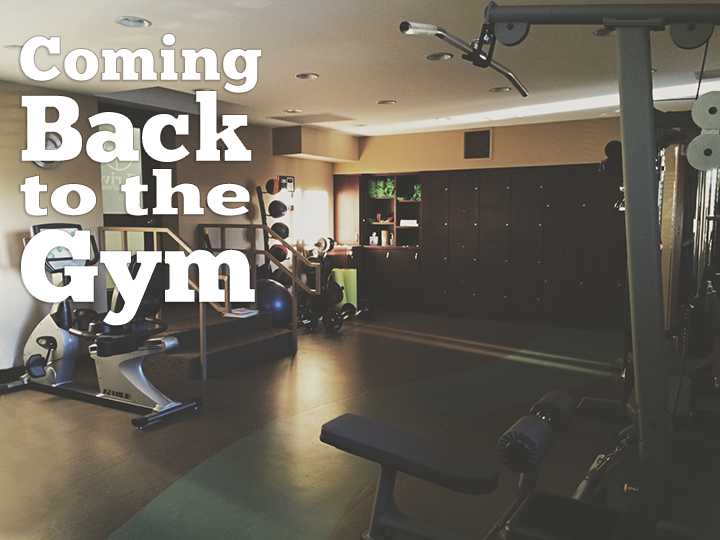I think the saying goes something like this, “Life is what happens when you are busy making other plans”. No one includes an injury in their workout plan for the week. No one pencils in illness for the second Tuesday of next month. That doesn’t mean it’s not going to happen. Often it pops up when you’re feeling strong and on a roll. Other times you may have noticed something has felt off but never thought it could be serious. The reality is we will all at some time or another be sidelined just like Suzanne was. She’s got a great story (which I highly recommend you check out at her blog) and an amazing comeback in progress. – Pamela
There always has to be a first time, and it’s never how you expect it to be.
I was at my fittest when I took a four-month layoff from lifting weights due to surgery. I could do eight unassisted pull ups and was damn proud of it. I could rely on my body without worrying about hurting myself, because I was strong and flexible. I felt athletic, even as a 50-year-old woman with small, injury-prone joints and other physical challenges.
That sense of athleticism came from consistent strength training, but it ALL went away during my layoff.
When I returned to the gym, I was a beginner all over again. And I was afraid – what if I hurt myself or looked dumb as I fumbled around with equipment and movements that now felt foreign? I help clients OWN IT in the weight room and beyond, but I had forgotten what it was like to be a beginner. I now see the experience more clearly through their eyes.
Perhaps my story will help you push through the hurdles of being a newbie and rock the body of your dreams, whether it’s feeling athletic or simply having more confidence. You can do this, whether you’ve been away from training for months/years or haven’t yet started.
Obliterate Mental Hurdles
The biggest hurdle of starting to work out isn’t having the perfect program or knowing what to do (though we’ll talk about that). The most daunting challenge is pushing through your mental hurdles.
We all fear failure and rejection to some degree, whether it’s making a mistake in front of others, imposing a new schedule on people we care about, or getting injured.
But the main reason we have these feelings is because our brains don’t like change – routine is rewarded with feelings of comfort and safety. When you introduce a new environment or stimulus into your daily routine or that of others, it can feel scary and frustrating at first. I’m no neuroscientist (no, really), but I think self-preserving thoughts and feelings are totally normal. Your brain is wired to produce them.
The thing is, if you know your brain doesn’t like change, you can ignore its rationalizations and do it anyway. After all, fear’s job is to protect you in a sort of primitive way. But you know better.
For example, intellectually, I knew no one was judging me when I returned to the gym. But I still felt embarrassed about my decreased strength and atrophied muscles, even though other gym goers probably didn’t even know it’d been months since I’d be there (truth).
And although I was insecure about what I could handle, I tried to move carefully and methodically to minimize risks. I eased in to a higher intensity over a period of weeks so that in reality, I could handle it.
Using rational thoughts and actions to push through the primitive, “protective” ones will help you keep going if your discipline wanes. The first step towards doing this is to be aware of self-sabotaging thoughts and realize that they are just thoughts and not necessarily reality.
This applies to expecting instant results too, or becoming frustrated with the long-term process of becoming fitter. Observe the thoughts, but then detach from them. Don’t give them validity by indulging in them for long. Continue to push forward despite these thoughts, because you are tougher than them.
Set Up a Solid Plan
When I came back to the gym as a beginner, my body felt just like yours might feel when moving in new ways – a bit stiff and unstable. Even my old warm-up was tough, and carrying plates and dumbbells was harder than I remembered. (You mean I have to lift that plate up to the leg press machine?!)
But I started small, and you should too. I did a full-body body-weight / light circuit to increase overall conditioning and muscle activation: 12-15 reps for 2 sets of bench squats, cable rows, Romanian deadlifts, chest presses, floor bridges, planks, and maybe an isolation exercise or two, like bicep curls and tricep pushdowns.
Each session I tried to do a little more by adding weight and/or sets, resting less, or adding exercises or harder variations of exercises.
Within about six weeks, I began seeing changes in my body – less fat and more muscle definition. My confidence increased as a result – YES! My stamina improved quickly and I noticed I was (slowly) getting stronger. Then, one day, I realized I’d made a lot of progress. Literally – one day I realized this, and you will too.
How can you get to that point? By following a plan consistently. But you need to ease in so that you don’t find yourself blocked with fear and frustration. Focus on these basic principles and take it slow:
- Study and practice proper form. Record yourself to see if your form matches that of reliable video demos.
- Keep your workouts to less than an hour.
- Recover 48 hours before training the same muscles again.
- As time goes on, increase the difficulty to keep progressing.
- More activity means a higher metabolism, so move. Choose activities you enjoy, like hiking, skiing, power walking, snowshoeing, kickboxing, cycling, or whatever. Just move!
- Track your progress. Take a “before” picture, get baseline measurements and weight, and log your workouts. Trust me, you will be glad you did. Seeing progress is incredibly motivating!
- Remember that it takes a long time to build muscle and strength. Stay with it and you’ll be rewarded with a stronger, fitter body!
Enjoy the Process
I’ve been back for over three months and (of course) am still am not back to where I was. Being fit and strong is an ongoing journey, and there’s joy to be found in the process itself.
I appreciate my strong body more than ever and will do everything I can to keep it that way. Are you with me?





